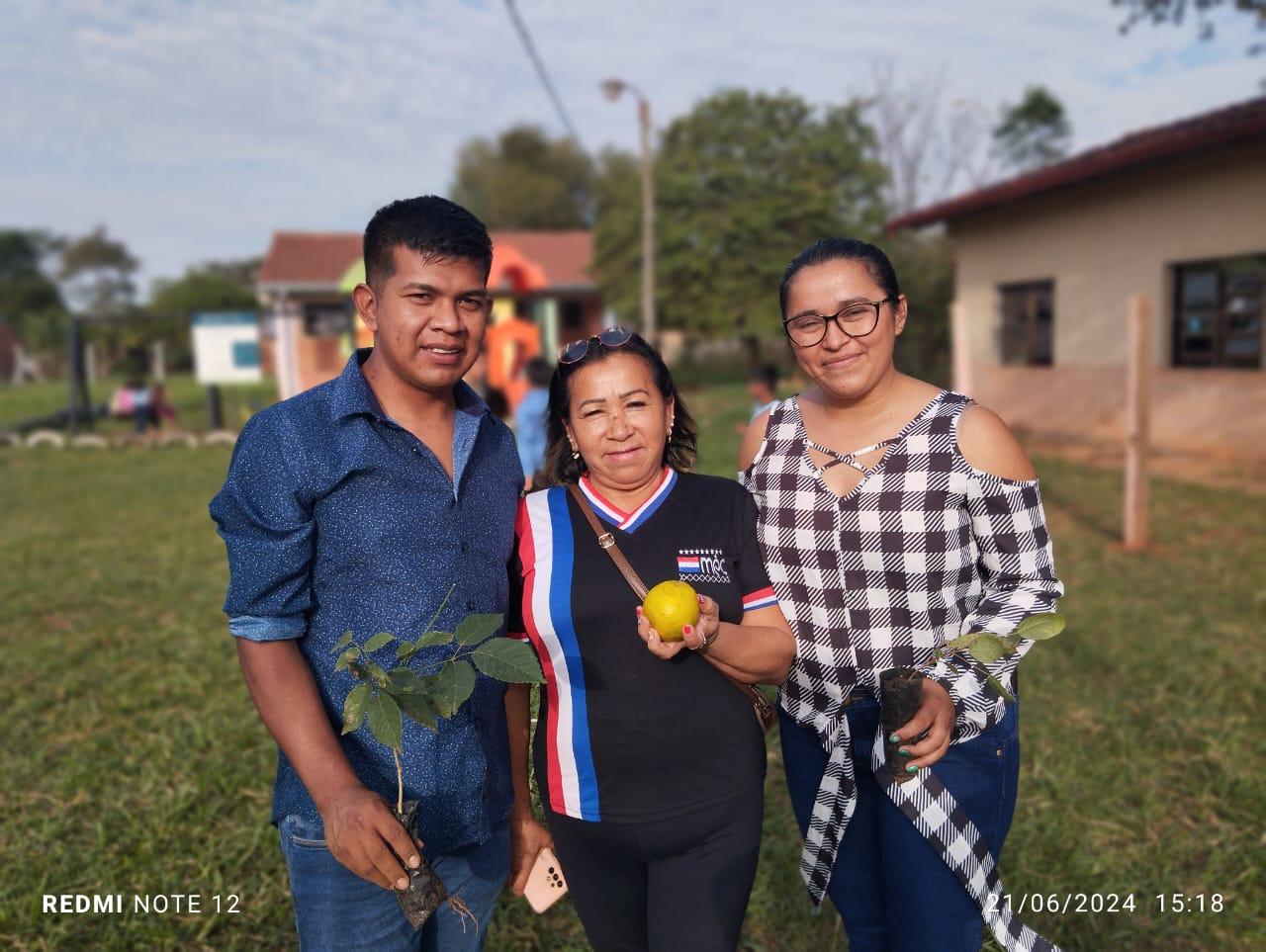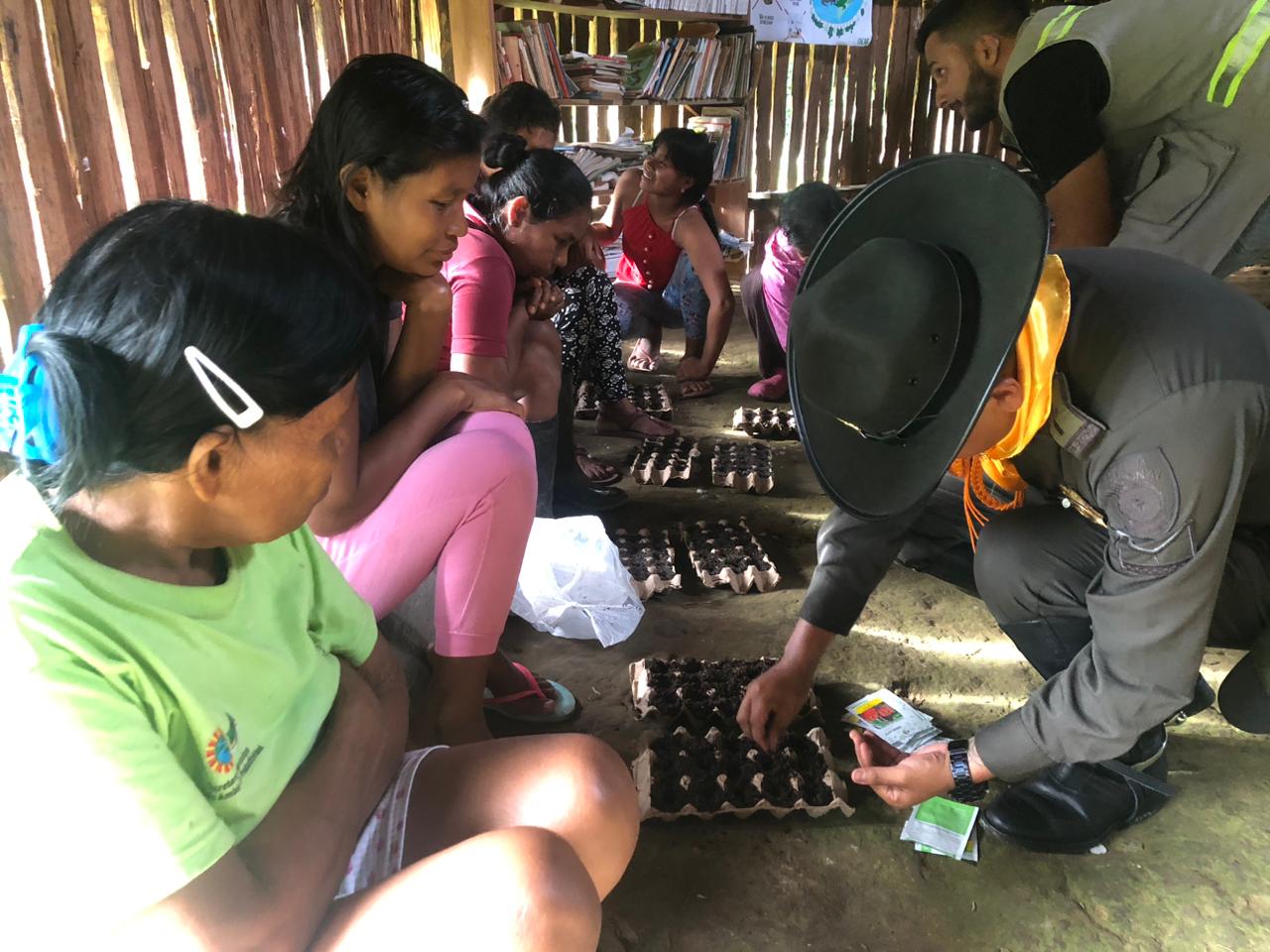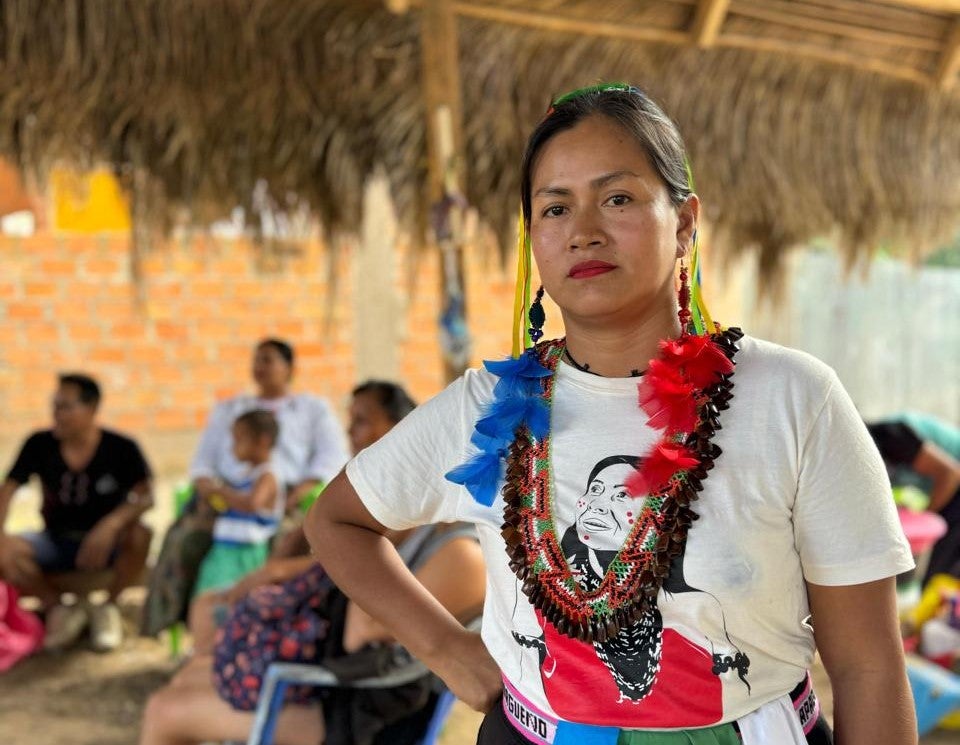
Indigenous communities have a wealth of knowledge gained from generations of sustainable land management practices, making them invaluable leaders in reforestation and conservation efforts. As climate change and ecological decline become more pressing, Indigenous youth are stepping up as strong environmental stewards. They are leading reforestation projects grounded in ancestral wisdom and a deep connection to the land. These initiatives go beyond just planting trees; they represent a cultural revival, ecosystem restoration, biodiversity preservation, resilience, and a sense of hope.
Cultural Survival's Indigenous Youth Fellowship Program supported reforestation initiatives led by three Indigenous Youth Fellows in their communities. These efforts emphasize the essential connection between environmental restoration and Indigenous self-determination.
Dierson Piris Isasi (Ava Guaraní) from Paraguay
Dierson Piris Isasi is from the Mytuy community in Curuguaty, Paraguay. He works as a teacher in local schools, where he strives to instill the traditional values of his roots in his students, whom he affectionately refers to as his brothers. Currently, Dierson is in his final year of studying law. He is driven by a passion for advocating for the rights of his people, motivated by the discrimination and institutional mistreatment he experienced during his childhood.
Dierson's project, titled “Reforestación y Educación Ambiental” (Reforestation and Environmental Education), aimed to promote reforestation and environmental awareness within the Mytuy community. Last year, he successfully increased local forest cover by planting trees in areas identified as suitable for reforestation. Additionally, he educated the community on the vital role of trees in mitigating climate change, preserving biodiversity, and enhancing overall environmental quality.
To further this initiative, Dierson provided workshops and talks that equipped community members with practical skills for effectively planting and caring for trees. The project was executed in three phases. In the planning phase, the community identified suitable areas and species for reforestation and developed educational materials. The Implementation phase was initiated with a launching event, practical workshops, and educational talks. In the final Monitoring and Evaluation phase, the growth of the planted trees was monitored, and community surveys were conducted.
Johan Alexander Motta Vasques (Murui) from Colombia

Johan Alexander Motta Vásquez is a Murui community member from Patio De Ciencia Dulce in Leticia, Amazonas, Colombia. After completing his education as a Systems Technician, his life changed in 2020 with the birth of his daughter and the onset of the COVID-19 pandemic. He holds diplomas in sustainable rural tourism and environmental management. His experiences in national and international forums would motivate him to run for governor of his Indigenous territory in 2024, with a vision for sustainable development for his community.
Inspired by the teachings of his elders in traditional medicine and agriculture, Johan founded the Jofo Ananeko Indigenous Tourism Association in 2021. The association aims to promote the common good, equity, and well-being while working towards the restoration of fundamental rights. It focuses on strengthening cultural and linguistic identity, preserving the Murui-Muina eco-ethnocultural heritage, and protecting ancestral legacies. Additionally, the association is committed to developing a productive, sustainable, and collective economic model that harmonizes with nature and respects the territory.
Johan, with support from Cultural Survival, implemented a project focused on strengthening community water systems. To achieve this, ancestral knowledge was applied and native species (such as Aguaje, Asai, Bacaba, Camu Camu) were planted to retain water and feed fish, with the aim of improving the health of the river and the overall quality of life of the community. He organized a meeting with 20 community members, appointing two elders to lead three discussion groups. These groups, based on oral tradition, sought to raise awareness about the importance of water sources and identified native plants to restore the flow. At the same time, a commission was formed to clean up 1 kilometer of the watercourse, followed by the construction of an aquatic plant nursery and a public bridge. After planting the aquatic plants, a final meeting was held to gather feedback and highlight the importance of water for life.
Harol Chujandama Apagueño Patrick (Kechwa) from Peru

Harol Chujandama Apagueño Patrick, Kechwa of the Amazon in Peru, actively supports his community, Tupac Amaru, and the FEPIKECHA organization through participation in training and initiatives. His work includes networking, advocacy, and organizing events to promote Indigenous rights and forest conservation. The native community of Tupac Amaru in the Peruvian Amazon rainforest centers its Indigenous worldview on protecting their land and culture. They collaborate with communicators, journalists, and human rights activists to report rights violations against Indigenous peoples in the Peruvian Amazon and are part of FEPIKECHA, working alongside other native communities.
Given the present climate of violence against Amazonian leaders, Harol calls for immediate action to protect their lives and communities. He states that a greater understanding of this context can foster collaborative strategies and dialogues between the state and civil society, leading to innovative solutions for environmental protection and the security of environmental leaders.
Cultural Survival supports "Visibilizar Para Resistir: Protegiendo a los Defensores del Bajo Huallaga," a project by Harol that tackles the challenges faced by Bajo Huallaga communities in defending their land. The project highlights the urgent need to safeguard Amazonian leaders and the environment. Harol documented testimonies of threatened leaders, illegal logging, illicit crop cultivation, and neglect. Furthermore, a reforestation initiative was undertaken with the community's women's association and the San Martín regional government, involving the collection of native seeds, cultivation of seedlings, and reforestation of watershed headwaters. Through reforestation efforts, Indigenous youth actively shape a more just, resilient, and sustainable future. Their profound work necessitates not just admiration but also tangible support. In the face of a worsening climate crisis, the world should look to those with enduring knowledge of ecological balance, empowering them with the necessary resources and autonomy to lead the way.



